 |
 |
 |
| |
HIGH FREQUENCY (50%) OF NEUROCOGNITIVE DISORDERS IN OLDER (>60 yrs) HIV-INFECTED PATIENTS DESPITE A SUSTAINED VIROLOGICAL AND IMMUNOLOGICAL RESPONSE ON CART: THE SIGMA STUDY
|
| |
| |
Reported by Jules Levin
CROI 2009 Feb 8-12 Montreal
A Dulioust1, N Lerolle1, P Dolphin1, F Boufassa2, M Duracinsky1, J-F Delfraissy1,3, C Goujard1 and J Gasnault1,3
1 Hopital Bicetre, APHP ; 2 INSERM U822, 3 INSERM U802, Universite Paris Sud XI ; Le Kremlin-Bicetre (France)
AUTHOR CONCLUSIONS
Despite a sustained response to cART, neurocognitive impairment (NCI) can be detected in 49% of HIV+ patients aged of 60 years and more, using a brief neuropsychological battery.
In our 37 patients, cardio-vascular risk factors are highly prevalent (68%), but are not associated with NCI.
Subcortical type of NCI is more predominant than neocortical type.
The respective roles of HIV, cART, and co-morbidities remain debated.
Further studies (including brain MRI and CSF HIV load) are ongoing to determine factors associated with NCI in aging.
ABSTRACT
Background: During aging, HIV infection could accelerate the emergence of cognitive disorders, despite the widespread use of virologically effective combination ART (cART).
Methods: We report here the neurocognitive subset (Neurosigma) of the Sigma study, an observational, cross-sectional study designed to describe the medical conditions and the psychosocial status of patients aged 60 years and more in the Bicetre HIV Cohort, an hospital cohort of 1350 HIV-infected patients. Demographic data, medical and therapeutic history, cardiovascular risk factors
(CRF), plasma HIV RNA levels, and CD4 counts since HIV diagnosis were collected. Subjects with active neurologic or psychiatric diseases and low educational level were excluded. Subjects underwent a brief neuropsychological exam using the Trailmaking A/B and the Digit Symbol yielding a composite NPZ3 score (assessing psychomotor speed, attention, cognitive sequencing, and
shifting cognitive sets). The Mini-Mental State Examination (MMSE), the Geriatric Depression Scale (GDS), and the Instrumental Activity of Daily Living (IADL) were performed.
Results:
Among the 75 patients older than 60 years, 37 (49%) achieved the Neurosigma substudy.
At enrolment, all patients except 1 were treated with cART; 73% were men. Median age was 67 years (range 60 to 84). Median duration of HIV infection and of ART were respectively 11 (IQR 5 to 17) and 10 (IQR 3 to 14) years.
Median nadir CD4 count was 207 cells/_L (IQR 92 to 293), whereas the last median CD4 count was 519 cells/_L (IQR 439 to 675). HIV RNA was <40 copies/mL in all treated patients.
One or more CVR factors was present in 25 patients (diabetes 22%, hypertension 49%, dyslipidemia 30%, tobacco use 22%).
A neurocognitive impairment was detected in 18 patients (49%). MMSE was abnormal (<-1.65 SD) in 6 (16%) patients. Severe impairment (<-2) of NPZ3
was observed in 11 patients (30%) including 4 with abnormal IADL and mild (-2
5) in 7 patients (19%).
Conclusions: Despite a sustained response to cART, neurocognitive disorders are more frequent in old HIV+ patients than in the general aging population, but are underdiagnosed by their physicians. In our patients, subcortical types of cognitive impairment remain more predominant than neocortical types. The respective role of HIV, ART, and co-morbidities is debated. Longitudinal studies are needed to assess the outcome of these disorders in aging and to determine their predictive factors.
♦ Updated on 31 January 2009.
BACKGROUND
Longer life expectancy of people living with HIV treated with long term sustained combination antiretroviral therapy (cART) focuses on the impact of a chronic HIV infection on the process of normal aging.
During aging, HIV infection could accelerate the emergence of cognitive disorders despite the widespread use of virologically effective cART.
We report here the neurocognitive subset (Neurosigma) of the Sigma study.
The cross-sectional Sigma study was designed to describe the medical conditions and the psychosocial status of patients aged 60 years and more in the Bicetre HIV Cohort, an hospital cohort of 1350 HIV-infected patients.
RESULTS
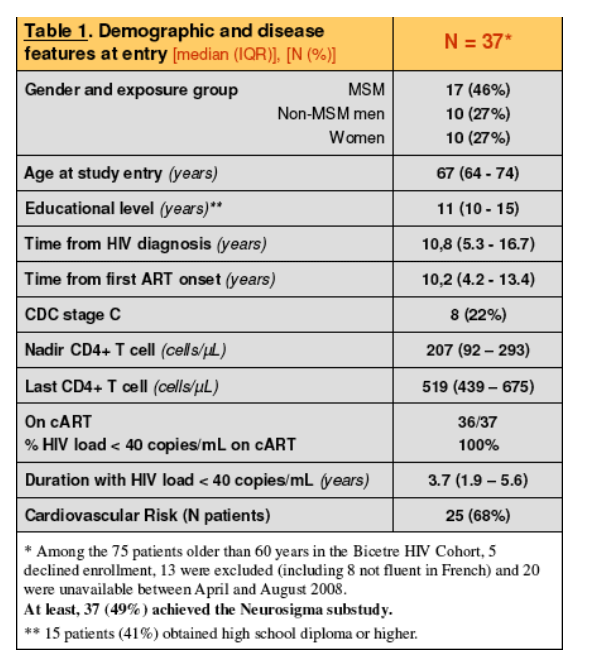
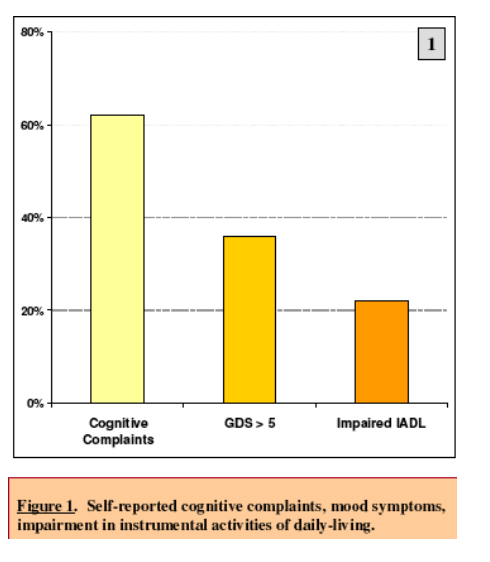
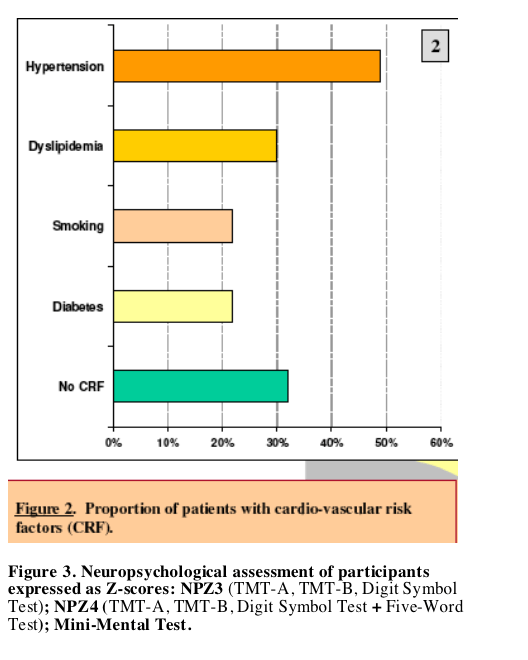
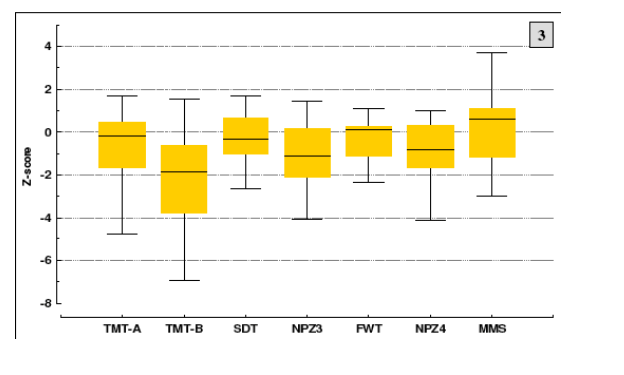
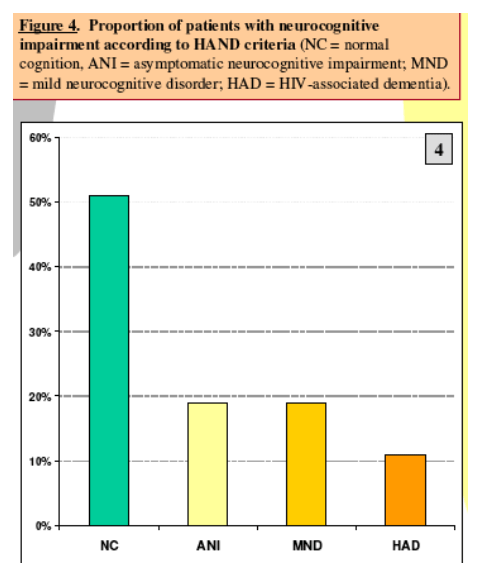
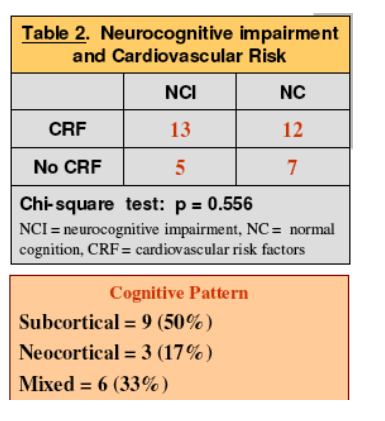
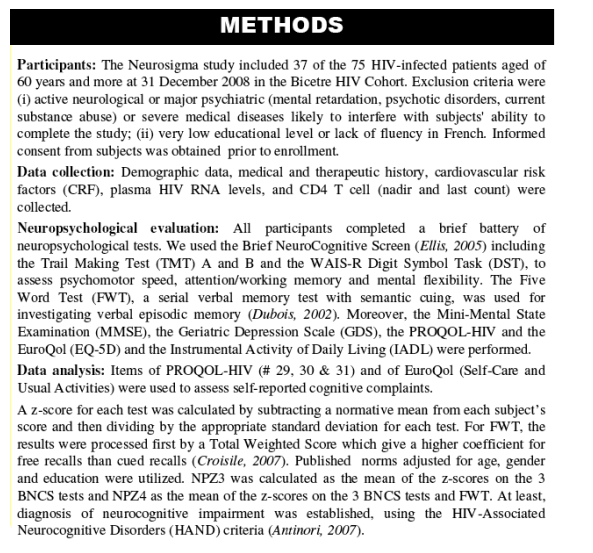
|
| |
|
 |
 |
|
|